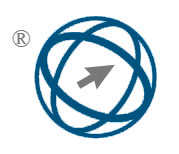Chaos-Based Medical Image Encryption with Key Establishment Technique Using ChaCha20 and Diffie-Hellman Protocols
Abstract
In healthcare, medical images are often transmitted over unsecured networks for consultation and diagnosis, exposing them to significant security risks. Therefore, it is crucial to implement effective encryption and key establishment schemes to preserve the integrity of this sensitive data. A critical issue is the repeated use or exposure of encryption keys, which increases the risk of compromise or interception. This paper proposes a novel key establishment technique for chaos-based encryption systems. This technique integrates the Diffie-Hellman protocol for asymmetric key agreement and the ChaCha20 stream cipher for secure stream encryption. These components are combined within a cryptosystem based on 2D Zaslavsky and Henon chaotic maps. The proposed technique preserves the integrity of medical image transmission without explicit key exchange and eliminates synchronization-induced errors introduced by conventional chaos-based systems. Experiments are conducted on 100 grayscale and RGB medical images of 256 × 256 and 610 × 610 resolutions. The evaluation is carried out using two 64 −
Full Text:
PDFReferences
M. Aamir and S. Sharma and A. Grover (2021). ChaCha20-in-Memory for Side-Channel Resistance in IoT Edge-Node Devices. IEEE Open Journal of Circuits and Systems, 2, 833-842. https://doi.org/10.1109/OJCAS.2021.3127273
M. A. Abu-Faraj and A. Al-Hyari and Z. Alqadi(2022). A complex matrix private key to enhance the security level of image cryptography. Symmetry, 14(4), 664. https://doi.org/10.3390/sym14040664
I. S. Abuhaiba and H. M. Abuthraya and H. B. Hubboubb and R. A. Salamah (2012). Image encryption using chaotic map and block chaining. International Journal of Computer Network and Information Security, 4(7), 19-26. https://doi.org/10.5815/ijcnis.2012.07.03
S. Agarwal (2018). Secure image transmission using fractal and 2D-chaotic map. Journal of Imaging, 4(1), 17. https://doi.org/10.3390/jimaging4010017
W. Alexan and Y. L. Chen and L. Y. Por and M. Gabr (2023). Hyperchaotic maps and the single neuron model: A novel framework for chaosbased image encryption. Symmetry, 15(5), 1081. https://doi.org/10.3390/sym15051081
G. Alvarez and S. Li (2006). Some basic cryptographic requirements for chaos-based cryptosystems. International journal of bifurcation and chaos, 16(08), 2129-2151. https://doi.org/10.1142/S0218127406015970
V. I. Arnold and A. André (1967). Problèmes ergodiques de la mécanique classique. Gauthier-Villars,9
J. P. Aumasson and S. Neves and Z. Wilcox-O’Hearn and C. Winnerlein (2013): “BLAKE2: simpler, smaller, fast as MD5”, Applied Cryptography and Network Security: 11th International Conference,11, 119-135. https://doi.org/10.1007/9783642389801_8
Z. Bashir and M. A. Malik and M. Hussain and N. Iqbal (2022). Multiple RGB images encryption algorithm based on elliptic curve, improved Diffie Hellman protocol. Multimedia Tools and Applications, 81(3), 3867- 3897. https://doi.org/10.1007/s11042-021-11687-1
D. J. Bernstein (2005). Salsa20 specification. eSTREAM Project algorithm description
D. J. Bernstein (2008). ChaCha, a variant of Salsa20. In Workshop record of SASC, 8(1), 3-5
W. Diffie and M. E. Hellman (2022). New directions in cryptography. In Democratizing Cryptography: The Work of Whitfield Diffie and Martin Hellman 365-390. https://doi.org/10.1145/3549993.3550007
H. ElKamchouchi and W. M. Salma and Y. Abouelseoud (2020). New video encryption schemes based on chaotic maps. IET Image Processing, 14(2), 397-406. https://doi.org/10.1049/iet-ipr.2018.5250
M. J. Feigenbaum (1978). Quantitative universality for a class of nonlinear transformations. Journal of Statistical Physics, 19(1), 25-52. https://doi.org/10.1007/BF01020332
G. Flurry (2021). Raspberry Pi 3 Model B+ Setup. Java on the Raspberry Pi: Develop Java Programs to Control Devices for Robotics, IoT, and Beyond, 21-48. https://doi.org/10.1007/978-1-4842-7264-0 2
R. F. Fox (1997). Construction of the Jordan basis for the baker map. Chaos: An Interdisciplinary Journal of Nonlinear Science,7(2), 254-269. https://doi.org/10.1063/1.166226
H. Gao and X. Wang (2021). Chaotic image encryption algorithm based on zigzag transform with bidirectional crossover from random position. IEEE Access,9,105627–105640. https://doi.org/10.1109/ACCESS.2021.3099214
M. Ghazvini and M. Mirzadi and N. Parvar (2020). A modified method for image encryption based on chaotic map and genetic algorithm. Multimedia Tools and Applications, 79(37), 26927-26950. https://doi.org/10.1007/s11042-020-09058-3
G. Halfacree and E. Upton (2012). Raspberry Pi user guide. John Wiley & Sons.
R. Hamza and F. Titouna (2016). A novel sensitive image encryption algorithm based on the Zaslavsky chaotic map. Information Security Journal: A Global Perspective, 25(4-6), 162-179. https://doi.org/10.1080/19393555.2016.1212954
R. Hamza and Z. Yan and K. Muhammad and P. Bellavista and F. Titouna (2020). A privacy-preserving cryptosystem for IoT Ehealthcare. Information Sciences, 527, 493-510. https://doi.org/10.1016/j.ins.2019.01.070
M. A. Haque and N. Almrezeq and S. Haque and A. A. Abd El-Aziz (2022). Device access control and key exchange (DACK) protocol for Internet of Things. International Journal of Cloud Applications and Computing (IJCAC), 12(1), 1-14.http://dx.doi.org/10.4018/IJCAC.297103
M. Henon (2004). A two-dimensonal mapping with a strange attractor. Communications in Mathematical Physics, 50, 376-392. https://doi.org/10.1007/978-0-387-21830-4_8
Y. P. Hsieh and K. C. Lee and T. F. Lee and G. J. Su (2022). Extended chaotic-map-based user authentication and key agreement for HIPAA privacy/security regulations. Applied Sciences, 12(11), 5701. https://doi.org/10.3390/app12115701
S. Hussain and I. Mubeen and N. Ullah and S. S. U. D. Shah and B. A. Khan and M. Zahoor and M. A. Sultan (2022). Modern diagnostic imaging technique applications and risk factors in the medical field: a review. BioMed research international, 2022(1), 5164970. https://doi.org/10.1155/2022/5164970
V. G. Kamat and M. Sharma (2014). Symmetric image encryption algorithm using 3d rossler system. International Journal of Computer Science and Business Informatics, 14(1)
L. Keuninckx and M. C. Soriano and I. Fischer and C. R. Mirasso and R. M. Nguimdo and G. Vander Sande (2017). Encryption key distribution via chaos synchronization. Scientific reports, 7(1), 43428. https://doi.org/10.1038/srep43428
R. Lopez-Ruiz and C. Perez-Garcia (1992). Dynamics of two logistic maps with a multiplicative coupling. International Journal of Bifurcation and Chaos,2(2),421- 425. https://doi.org/10.1142/S0218127492000410
M. Magdy and K. M. Hosny and N. I. Ghali and S. Ghoniemy (2022). Security of medical images for telemedicine: a systematic review. Multimedia Tools and Applications, 81(18), 25101-25145. https://doi.org/10.1007/s11042-022-11956-7
U. M. Maurer and S. Wolf (2000). The diffie–hellman protocol. Designs, Codes and Cryptography, 19(2), 147-171. https://doi.org/10.1023/A:1008302122286
P. McLaren and W. J. Buchanan and G. Russell and Z. Tan (2019). Deriving ChaCha20 key streams from targeted memory analysis. Journal of Information Security and Applications, 48, 102372. https://doi.org/10.1016/j.jisa.2019.102372
U. H. Mir and P.N. Lone and D. Singh and D. C. Mishra (2023). A public and private key image encryption by modified approach of Vigener cipher and the chaotic maps. The Imaging Science Journal, 71(1), 82-96. https://doi.org/10.1080/13682199.2023.2175436
H. Mirvaziri and R. Hosseini (2020). A novel method for key establishment based on symmetric cryptography in hierarchical wireless sensor networks. Wireless Personal Communications, 112(4), 2373-2391. https://doi.org/10.1007/s11277-020-07155-y
M. Mousavi and B. Sadeghiyan (2021). A new image encryption scheme with Feistel like structure using chaotic S-box and Rubik cube based P-box. Multimedia Tools and Applications, 80(9), 13157-13177. https://doi.org/10.1007/s11042-020-10440-4
A. Msolli and N. Ajmi and A. Helali and A. Gassoumi and H. Maaref and R. Mghaieth (2023). New key management scheme based on pool-hash for WSN and IoT. Journal of Information Security and Applications, 73, 103415. https://doi.org/10.1016/j.jisa.2022.103415
R.B. Naik and K. Singh (2022). A Review on Applications of Chaotic Maps in Pseudo-Random Number Generators and Encryption. Annals of Data Science, 1-26. https://doi.org/10.1007/s40745-021-00364-7
J. H. Park (2006). Chaos synchronization between two different chaotic dynamical systems. Chaos, Solitons & Fractals, 27(2), 549-554. https://doi.org/10.1016/j.chaos.2005.03.049
L. M Pecora and T. L. Carroll (1990). Synchronization in chaotic systems. Physical review letters, 64(8), 821. https://doi.org/10.1103/PhysRevLett.64.821
M. U. Rehman and A. Shafique and S. Khalid and I. Hussain (2021). Dynamic substitution and confusion diffusion- based noise-resistive image encryption using multiple chaotic maps. IEEE Access, 9, 52277-52291. https://doi.org/10.1109/ACCESS.2021.3069591
A. Roy and D. R. Mahanta and L. B Mahanta (2025). A Semi-Synchronous Federated Learning Framework with Chaos-Based Encryption for Enhanced Security in Medical Image Sharing. Results in Engineering, 103886. https://doi.org/10.1016/j.rineng.2024.103886
K. Seyhan and T. N. Nguyen and S. Akleylek and K. Cengiz and S. H. Islam (2021). Bi-GISIS KE: Modified key exchange protocol with reusable keys for IoT security. Journal of Information Security and Applications, 58, 102788. https://doi.org/10.1016/j.jisa.2021.102788
V. Sureshkumar and S. Mugunthan and R. Amin (2022). An enhanced mutually authenticated security protocol with key establishment for cloud enabled smart vehicle to grid network. Peer-to-Peer Networking and Applications, 15(5), 2347-2363. https://doi.org/10.1007/s12083-022-01350-3
I. Tunali and R. J. Gillies and M. B. Schabath (2021). Application of radiomics and artificial intelligence for lung cancer precision medicine. Cold Spring Harbor perspectives in medicine, 11(8), a039537
J. Vivek and B. Gadgay (2021). Video steganography using chaos encryption algorithm with high efficiency video coding for data hiding. International Journal of Intelligent Engineering and Systems, 14(5), 15-24. http://dx.doi.org/10.22266/ijies2021.1031.02
J. Wu and X. Liao and B. Yang (2017). Color image encryption based on chaotic systems and elliptic curve El Gamal scheme. Signal Processing, 141, 109-124. https://doi.org/10.1016/j.sigpro.2017.04.006
Y. Xian and X. Wang and X. Yan and Q. Li and X. Wang (2020). Image encryption based on chaotic sub-block scrambling and chaotic digit selection diffusion. Optics and Lasers in Engineering, 134, 106202. https://doi.org/10.1016/j.optlaseng.2020.106202
G. M. Zaslavsky (1978). The simplest case of a strange attractor. Physics Letters A, 69(3), 145-147. https://doi.org/10.1016/0375-9601(78)90195-0
DOI: https://doi.org/10.31449/inf.v49i26.8752

This work is licensed under a Creative Commons Attribution 3.0 License.









